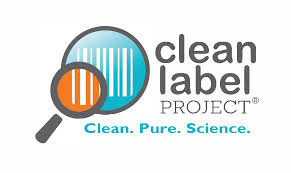 Are you passionate about promoting a toxin-free life for your human and animal family members. In my holistic veterinary practice I’m highly focused on minimizing toxic exposures in my canine and feline patients as a means of potentially avoiding the short and long term developments of illness. In my personal life, I also take the same approach to live as cleanly as possible to be the healthiest version of myself despite the years seemingly flying by faster than ever.
Needless to say, when given the opportunity to interview Clean Label Project Executive Director Jaclyn Bowen I jumped at the chance.
Are you passionate about promoting a toxin-free life for your human and animal family members. In my holistic veterinary practice I’m highly focused on minimizing toxic exposures in my canine and feline patients as a means of potentially avoiding the short and long term developments of illness. In my personal life, I also take the same approach to live as cleanly as possible to be the healthiest version of myself despite the years seemingly flying by faster than ever.
Needless to say, when given the opportunity to interview Clean Label Project Executive Director Jaclyn Bowen I jumped at the chance.
- Do you have a personal story that motivated you to become involved with the Clean Label Project?
- What is Clean Label Project’s perspective on the most common reasons that pet foods are being recalled or sickening pets?
- Are there similarities between findings of toxic substances found in pets foods in comparison to those for humans (baby, etc.)?
- What does the Clean Label Project feel are the most-important approaches owners can take to ensure their pets aren’t exposed to toxins in foods and treats?
- How does Clean Label Project go about performing laboratory testing on pet foods and treats to help protect pets (i.e. does CLP choose the product and do the testing on their on volition or does the consumer send in a product to be tested)?
- How does Clean Label Project go about giving a product the 1 to 5-star rating?
- Have you noted an interest in certain companies or a lack of interest in other companies with the Clean Label Project?
- Does the Clean Label Project work with veterinarians to strive to educate pet owners about the potential dangers lurking and had food? If not, how would you like to work with veterinarians?
- What is the Clean Label Project hoping to achieve with the Pet Food Cancer Study 2017 and when can pet owners see the results of the study?
- What are the upcoming projects in which the Clean Label Project is involved to promote the safety of pets as pertains to the foods and treats they eat?
 Dr. Patrick Mahaney
Dr. Patrick Mahaney
Please leave your constructive perspective in the below Comments section and communicate with me and follow my adventures in veterinary medicine and life via Instagram (@PatrickMahaney), Twitter (@PatrickMahaney), and Facebook (Patrick Mahaney: Veterinarian Acupuncture Pain Management for Your Pets).
Copyright of this article (2018) is owned by Dr. Patrick Mahaney, Veterinarian, Certified Veterinary Acupuncturist and Certified Veterinary Journalist. Republishing any portion of this article must first be authorized by Dr. Patrick Mahaney. Requests for republishing must be approved by Dr. Patrick Mahaney and received in written format.
